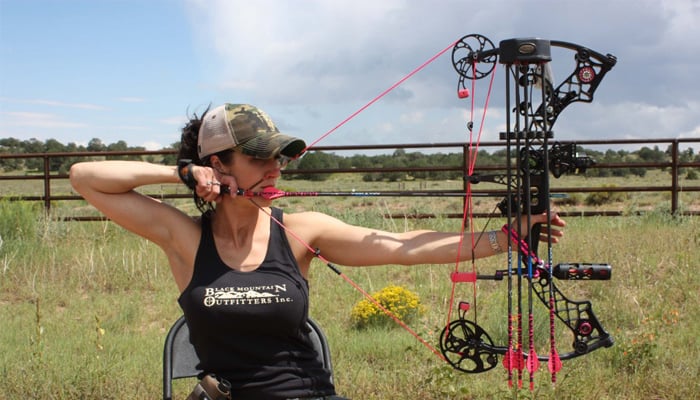With over 125 different terms describing archery gear and archery techniques, the simple act of discussing the sport of archery with a fellow archer seemingly requires the use of an entire sub-language that is a complete mystery to anyone who is not themselves an archer!
For instance, speaking strictly of measurements, we have draw weight, draw length, brace height, axle-to-axle length, AMO length, center shot, nock point, and so on!
With the anatomical stature of each archer being different, each of those measurements is important to each individual archer to enable them to choose the correct bow for their stature and/or customize a bow to suit them.
What is draw weight, how does an archer measure it and, why is it important?

Well, in the case of a traditional bow, draw weight is the amount of force required to draw the bow’s string to a distance of 28 inches and, in the case of a compound bow, draw weight the amount of force required to draw the bow to the wall (the point at which the cams will not allow the archer to draw the bow string any further) and is measured in pounds in the U.S usually by employing a hanging scale with a hook on bottom end which is used to pull the bow string to full draw.
Therefore, most traditional bows have draw weights ranging from 15 pounds to 55 pounds whereas, most compound bows have draw weights ranging from 45 to 70 pounds.
Also, it should be noted that because traditional bows lack eccentric cams at the end of each limb, when drawing a traditional bow, the archer must hold the full draw weight when drawing the bow to their anchor point (the place where the archer chooses to draw the arrow’s nock during every shot).

When drawing a compound bow, due to the eccentric cams positioned at the end of each limb, the archer will reach the peak draw weight at some point in the draw cycle prior to reaching the wall and then, as the apex of the eccentric cam passes perihelion, the draw weight will start to decrease until it decreases to somewhere between 65 percent and 80 percent of its peak draw weight which is called “let off” and is described as the amount of reduction in draw weight an archer will experience when drawing a given bow (ex. 65 % let off, 80 % let off).
The reason that draw weight is important to an archer is because, in the case of a traditional bow, it works in conjunction with arrow weight to determine arrow speed.
Whereas, in the case of a compound bow, it works in conjunction with both cam design and arrow weight to determine arrow speed.

In turn, the reason that arrow speed is important is that it works in conjunction with arrow shaft weight combined with field point or broad head weight to determine both the flatness of the arrow’s trajectory as well as its kinetic energy.
For any given draw weight, light arrows will have a significantly flatter trajectory than heavy arrows will.
They will be much better at compensating for minor miscalculations in the distance to the target than heavy arrows will.
But, at the same time, light arrows have significantly less kinetic energy than heavy arrows do and light arrows will not penetrate the body cavity of a game animal as deeply as a heavy arrow will.
Nor will they penetrate ribs or shoulder blades as well as a heavy arrow will.

Which this is not a major concern for dedicated target shooters who most often choose the lightest arrow the rules of their chosen type of target archery will allow, it is an absolute must that hunters match the kinetic energy levels of their arrows to the particular game species that they choose to pursue in order to ensure sufficient penetration for a humane kill.
The thing to remember is that while lighter draw weights are easier to pull and hold, they generate significantly slower arrow speeds as well as significantly less kinetic energy while, heavier draw weights produce faster arrow speeds and greater kinetic energy levels but, are more difficult to draw and hold.
Therefore, light draw weights are best suited for dedicated target shooting while heavy draw weights are best suited for hunting.
